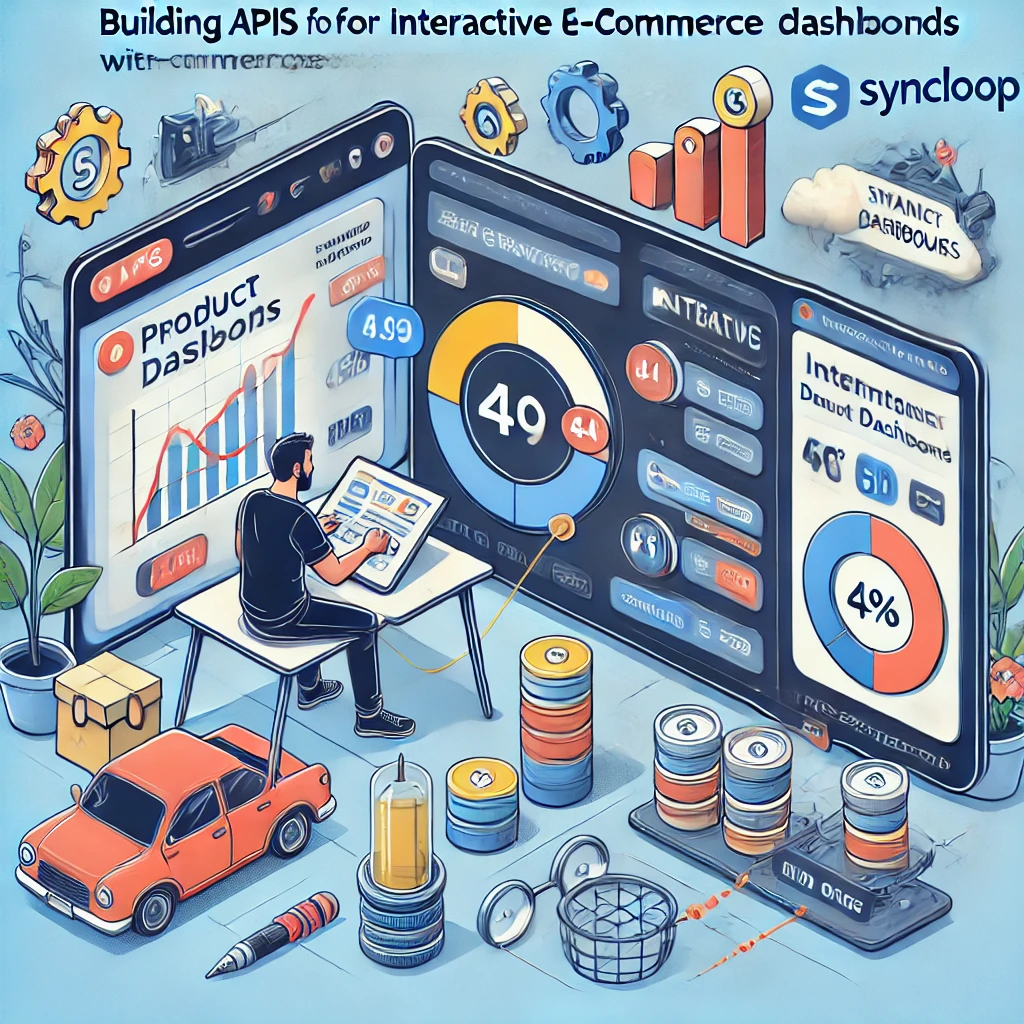Building APIs for Interactive E-Commerce Dashboards with Syncloop

Syncloop offers robust tools for building APIs that deliver data efficiently, securely, and in real time. With features like dynamic data mapping, workflow automation, and real-time monitoring, Syncloop simplifies the development and management of APIs for e-commerce dashboards. This blog explores how Syncloop enables interactive e-commerce dashboards and best practices for their implementation.
The Role of APIs in E-Commerce Dashboards
APIs power e-commerce dashboards by enabling:
- Real-Time Updates: Delivering live data for inventory, sales, and customer metrics.
- Dynamic Visualization: Supporting interactive charts, graphs, and tables.
- Data Integration: Connecting multiple systems like CRM, ERP, and payment gateways.
- Scalability: Handling large volumes of data and user interactions simultaneously.
- Personalized Insights: Tailoring dashboards to specific roles or user preferences.
Challenges in Building E-Commerce Dashboard APIs
- Real-Time Data Processing Handling high-frequency updates from multiple sources.
- Integration Complexity Connecting APIs to diverse systems with different protocols and data formats.
- Scalability Managing spikes in traffic during high-demand periods like sales events.
- Latency Issues Ensuring fast data delivery for responsive dashboards.
- Data Security Protecting sensitive information like sales and customer data.
How Syncloop Simplifies API Development for Dashboards
Syncloop provides features and tools to address these challenges effectively:
- Real-Time Processing Handle high-throughput data streams with low-latency processing.
- Dynamic Data Mapping Normalize and transform data for seamless integration between systems.
- Workflow Automation Automate data aggregation, filtering, and delivery to dashboards.
- Scalable Architecture Support high traffic and large datasets effortlessly.
- Advanced Security Protect API interactions with encryption, authentication, and access controls.
- Monitoring and Analytics Track API performance and optimize workflows with real-time insights.
Steps to Build E-Commerce Dashboard APIs with Syncloop
Step 1: Define Dashboard Requirements
Identify the key metrics and functionalities needed for the dashboard, such as:
- Sales and revenue tracking.
- Customer behavior analytics.
- Inventory and supply chain updates.
Step 2: Design API Endpoints
Use Syncloop to define endpoints for data access and updates, such as:
- /dashboard/sales: Provides real-time sales data.
- /dashboard/customers: Fetches customer insights and metrics.
- /dashboard/inventory: Delivers live inventory status.
Step 3: Automate Data Workflows
Leverage Syncloop’s workflow automation tools to:
- Aggregate data from multiple sources like payment systems and CRMs.
- Filter and format data for visualization components.
- Trigger updates automatically based on user interactions or predefined schedules.
Step 4: Implement Real-Time Features
Configure Syncloop to enable real-time updates by:
- Using WebSocket or polling mechanisms for data delivery.
- Caching frequently accessed data to reduce latency.
- Optimizing queries for speed and efficiency.
Step 5: Secure API Interactions
Use Syncloop’s security features to:
- Encrypt sensitive data during transit and at rest.
- Authenticate API users with tokens or OAuth mechanisms.
- Enforce role-based access control for dashboard features.
Step 6: Monitor and Optimize
Enable Syncloop’s monitoring tools to:
- Track API performance metrics like latency and error rates.
- Detect and resolve bottlenecks in data delivery workflows.
- Use analytics to optimize resource allocation and scaling strategies.
Best Practices for E-Commerce Dashboard APIs
- Optimize for Real-Time Performance Prioritize low latency and high throughput for responsive dashboards.
- Enable Role-Based Access Restrict access to sensitive metrics based on user roles or permissions.
- Use Modular API Design Create modular endpoints to ensure flexibility and scalability.
- Monitor Continuously Use Syncloop’s monitoring tools to detect and address performance issues proactively.
- Document APIs Clearly Provide comprehensive documentation for developers and stakeholders.
Example Use Case: Multi-Brand E-Commerce Platform
A multi-brand e-commerce platform uses Syncloop to power its interactive dashboards:
- Real-Time Sales Tracking: Displays live revenue and order updates during promotional events.
- Customer Insights: Visualizes customer demographics and shopping trends dynamically.
- Inventory Monitoring: Updates stock levels and alerts for low inventory in real time.
- Scalability: Handles increased traffic seamlessly during peak shopping seasons.
- Monitoring: Tracks API performance and resolves latency issues promptly.
Benefits of Using Syncloop for Dashboard APIs
- Improved Efficiency: Automate data workflows and reduce manual intervention.
- Enhanced Performance: Deliver low-latency updates for responsive user experiences.
- Seamless Integration: Connect diverse systems and data sources effortlessly.
- Secure Operations: Protect sensitive data with advanced security features.
- Actionable Insights: Gain visibility into API performance and optimize workflows.
The Future of E-Commerce Dashboards
As e-commerce continues to evolve, interactive dashboards will play a vital role in driving data-driven decision-making. Syncloop equips developers with the tools to build scalable, secure, and high-performance APIs, enabling real-time insights and exceptional user experiences.
Image Description
A conceptual illustration showcasing Syncloop’s capabilities for powering interactive e-commerce dashboards, featuring real-time data updates, workflow automation, and secure data delivery. The image highlights seamless integration and responsive design for modern e-commerce platforms.
Back to Blogs